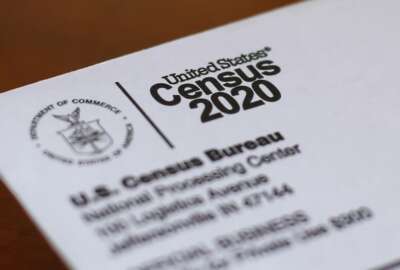The Census Bureau will wrap up field operations for the 2020 count in less than 20 days, but enumerators have yet to count 15% of the population in 10 states, leaving experts to raise questions the overall quality of the data.
Stuck between delays from the coronavirus pandemic and the Trump administration’s instruction to still complete the count on time, the bureau is working on a compressed timeline to wrap up field operations and process the data.
Chris Mihm, the managing director of the strategic issues team at the Government Accountability Office, told the House Oversight and Reform Thursday that the bureau faces “an enormous challenge” completing the 2020 count on time with a level of data quality on par with previous decennial counts.
“The Census Bureau will complete a census. The question, and the risk, is what will be lost. Will it be a less-than-historically acceptable count in terms of completeness and in terms of accuracy, and that’s a big worry that I think everyone faces,” Mihm said.
While Congress has demonstrated bipartisan support for extending statutory deadlines for the 2020 count, it has yet to pass legislation that would allow those changes. Absent that legislation, top officials at the Commerce Department have instructed the bureau to find a way to deliver the apportionment data by Dec. 31.
Former Census Bureau Director John Thompson said the shortened timeframe for post-data collection processing will not allow the bureau to run the computer programs prepared to carry out the critical activities as planned.
Thompson said the bureau would have to modify or alter the sequence of these computer programs, and that rushing to modify these programs at the last minute increases the risk of programming errors that would impact the data quality of the 2020 count — but may not be realized until 2022.
“The likelihood of a serious computer error that goes undetected is very high,” he said.
Thompson warned that the compressed timeline for enumeration would likely require the bureau to rely more heavily on administrative records and other “proxy enumeration” techniques that would probably lower the overall quality of the 2020 census compared to previous decennial counts.
The “extreme truncation,” he warned, would also lead to inaccuracies that will disproportionately hurt hard-to-count populations.
Mihm said the bureau overall remains ahead of its schedule for non-response follow-up at this time, but he said that the coronavirus pandemic, along with recent hurricanes and wildfires, have created a “perfect storm” that has wreaked havoc on the bureau’s recruiting and hiring of enumerators.
The turnover rate for temporary census workers is about double the 10% attrition rate the bureau projected, and the bureau has faced challenges getting enumerators to work longer hours to make up the difference.
Meanwhile, the bureau expects to “close out” its non-response follow-up on Friday, a final attempt to gather basic information on households that has yet to be occupied. But with some area census offices that are under 50% complete with non-response follow up, Thompson said more time is needed to ensure accuracy.
“The Census Bureau needs more time to do the data collection and they certainly need more time to do the data processing,” he said.
By all accounts, the hardest work still lays ahead of the bureau. In 10 weeks of non-response follow-up, Mihm said it’s not uncommon for the bureau to spend the last four weeks just going after counting 2% of the population.
“If they end up with 3% without being fully enumerated, that would be, by all historical standards, and certainly the standards of the professionals at the Census Bureau, not a successful count, not a complete and accurate count. That would be a major institutional defeat,” Mihm said.
Rep. Jamie Raskin (D-Md.) said the Trump administration’s commitment to the Dec. 31 deadline “has left the bureau scrambling and caused the agency to abandon its carefully crafted data processing schedule for a seat-of-the-pants plan cobbled together in a couple of days.”
“Despite the herculean of an army of enumerators, there’s still a shocking amount left to do to meet the constitutional mandate,” Raskin said.
States with the lowest rate of completion include Alabama, Florida, North Carolina, New Mexico, South Carolina, Arizona, Mississippi and Montana.
Copyright
© 2024 Federal News Network. All rights reserved. This website is not intended for users located within the European Economic Area.

